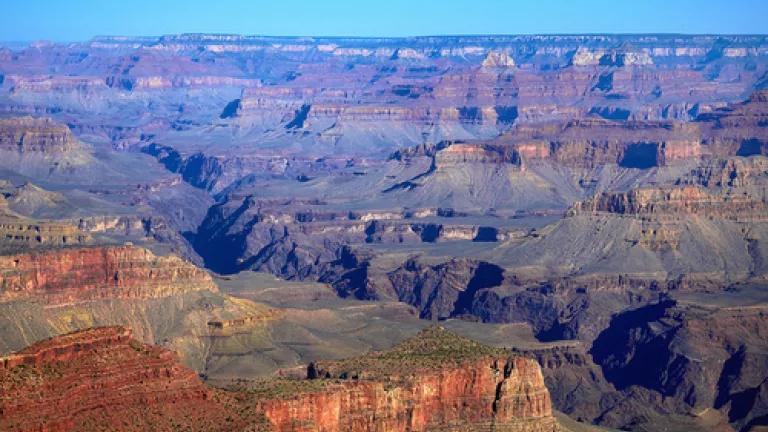
I first saw the Grand Canyon on a cold, calm, cloudless afternoon, more than a decade ago. It was late in the day in late March. From my vantage on the South Rim, the scene was dizzying. Before and below me, layer upon layer of red and yellow cliffs lined an enormous chasm that stretched in either direction as far as I could see. “Vast” didn’t begin to describe its immensity. On the other side, impossibly distant, the North Rim and Kaibab Plateau stretched long and flat against the horizon.
In the canyon’s presence I felt awed, insignificant, somehow even alone despite my family standing nearby. Looking back, I wonder, would a lone wolf encountering the same view feel something similar?
Because, for the first time in 70 years, one recently did.
Last month, a DNA analysis conducted by the U.S. Fish and Wildlife Service (FWS) confirmed that the large canine recently sighted north of the canyon is a female gray wolf. Incredibly, the wolf traveled to northern Arizona from somewhere in the northern Rocky Mountains, more than 450 miles away.
Such an achievement belongs not only to the wolf herself, but to the Endangered Species Act that protected her along the way.
Though Endangered Species Act protections have been removed for wolves in Idaho and Montana (and some parts of Oregon, Washington and Utah) they remain in place in the rest of the West — and most of the rest of the country. These protections are crucial for wolves like the Grand Canyon female who “disperse” from their packs and travel long distances to find food, new territories, and mates. Without federal protections in place, these already difficult journeys would become much more dangerous, if not impossible.
That’s because once federal laws are removed, state laws take their place. And, as my colleague Dr. Sylvia Fallon has pointed out, many state laws, legislatures and agencies are less than hospitable toward wolves.
For example, many states where wolves have already been “delisted” (had their federal Endangered Species Act protections removed) have authorized wolf hunting and trapping. Others have expanded the circumstances under which landowners may legally kill wolves on their property. Should federal protections be removed across the rest of the country, more states where wolves are present will likely do the same.
The threat of increased killing, added to the often fatal challenges of negotiating roads, ranches and development, may make it impossible for wolves to disperse to, and recolonize, places in the Pacific West, southern Rocky Mountains, and northern New England where abundant suitable wolf habitat still remains.
Since wolves were reintroduced to the northern Rocky Mountains in the mid-1990s, it has taken nearly two decades for lone dispersing animals to return to California and now the Grand Canyon. Clearly, these journeys have been difficult enough, even with federal protections in place. Without them, wolf restoration is likely at an end.
So how much longer will it take? When can federal protections be removed? When has a species been recovered and restored to such an extent that state management can resume?
There will be different answers for different species. But when it comes to wolves, the arrival of the lone female to Grand Canyon National Park gives us an emphatic, echoing, howling, hopeful, definitive response:
Not yet.
Photo: Moyan Brenn on Flickr, under Creative Commons licensing.
